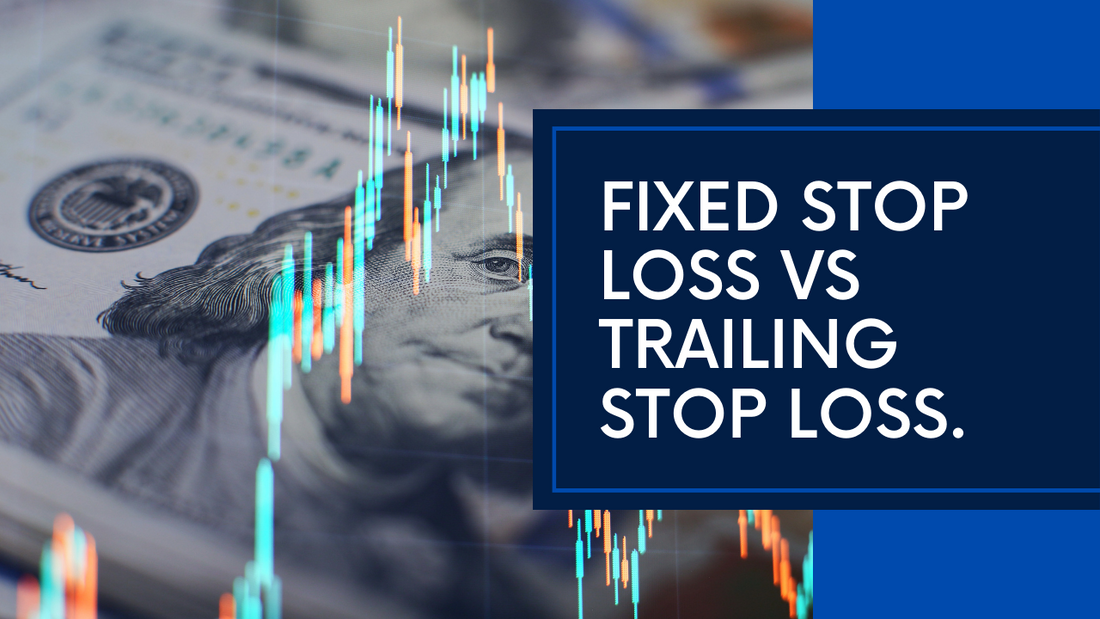
Comparing Fixed vs Trailing Stop Loss in Forex Trading
Share
When it comes to managing risk in forex trading, stop loss orders are an essential tool. They help traders limit potential losses by automatically closing a trade when it reaches a certain price level. Two common types of stop loss orders are fixed stop loss and trailing stop loss. In this blog post, we will compare these two types and explore their advantages and disadvantages.
What is a Fixed Stop Loss?
A fixed stop loss is a predetermined price level at which a trader will exit a trade to limit losses. For example, if a trader buys a currency pair at $1.00 and sets a fixed stop loss at $0.95, the trade will automatically close if the price reaches $0.95. The fixed stop loss does not change unless manually adjusted by the trader.
What is a Trailing Stop Loss?
A trailing stop loss is a dynamic type of stop loss that adjusts as the price of the currency pair moves in favor of the trader. It is set at a certain percentage or pip value below the current market price. If the price moves in the trader's favor, the trailing stop loss will move accordingly, maintaining the specified distance from the current price. However, if the price reverses and moves against the trader, the trailing stop loss will not move.
Advantages of Fixed Stop Loss
One advantage of using a fixed stop loss is that it provides a clear and predetermined exit point for a trade. Traders can set their risk tolerance and determine the maximum loss they are willing to accept. This can help them manage their emotions and stick to their trading plan.
Another advantage is that fixed stop loss orders are not affected by short-term price fluctuations or market noise. They provide a level of protection against sudden market movements and can help traders avoid significant losses.
Advantages of Trailing Stop Loss
A major advantage of using a trailing stop loss is that it allows traders to capture more profits during a trending market. As the price moves in their favor, the trailing stop loss automatically adjusts, locking in profits along the way. This can be particularly beneficial in volatile markets where prices can fluctuate rapidly.
Another advantage is that trailing stop loss orders can protect profits in case of a sudden reversal. If the price reverses and hits the trailing stop loss, the trade will be closed, allowing the trader to exit with a profit.
Disadvantages of Fixed Stop Loss
One disadvantage of using a fixed stop loss is that it does not account for market volatility or price fluctuations. If the market is highly volatile, the fixed stop loss may be triggered prematurely, resulting in missed opportunities for profit.
Another disadvantage is that fixed stop loss orders require constant monitoring and manual adjustment. Traders need to regularly reassess their risk levels and adjust their stop loss orders accordingly, which can be time-consuming and may lead to missed trading opportunities.
Disadvantages of Trailing Stop Loss
One disadvantage of using a trailing stop loss is that it can result in premature exits during market retracements. If the price temporarily reverses before continuing in the trader's favor, the trailing stop loss may be triggered, closing the trade prematurely and potentially missing out on further profits.
Another disadvantage is that trailing stop loss orders do not provide a fixed exit point. The distance between the current price and the trailing stop loss can vary, making it difficult for traders to determine their exact risk-reward ratio.
In conclusion, both fixed and trailing stop loss orders have their advantages and disadvantages. Traders should consider their trading style, risk tolerance, and market conditions when deciding which type of stop loss to use. Fixed stop loss orders provide a clear and predetermined exit point, while trailing stop loss orders allow for potential profit maximization. Ultimately, the choice between the two depends on the individual trader's preferences and trading strategy.




2 comments
Muchas gracias. ?Como puedo iniciar sesion?
Which one would you choose? Post your comment below!